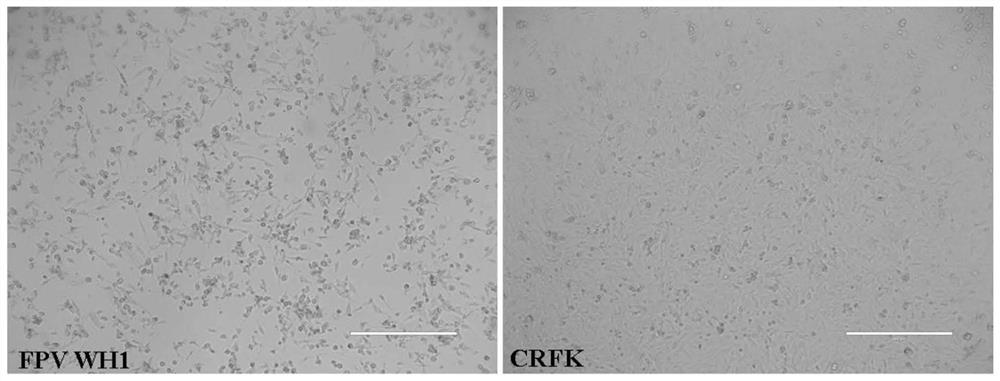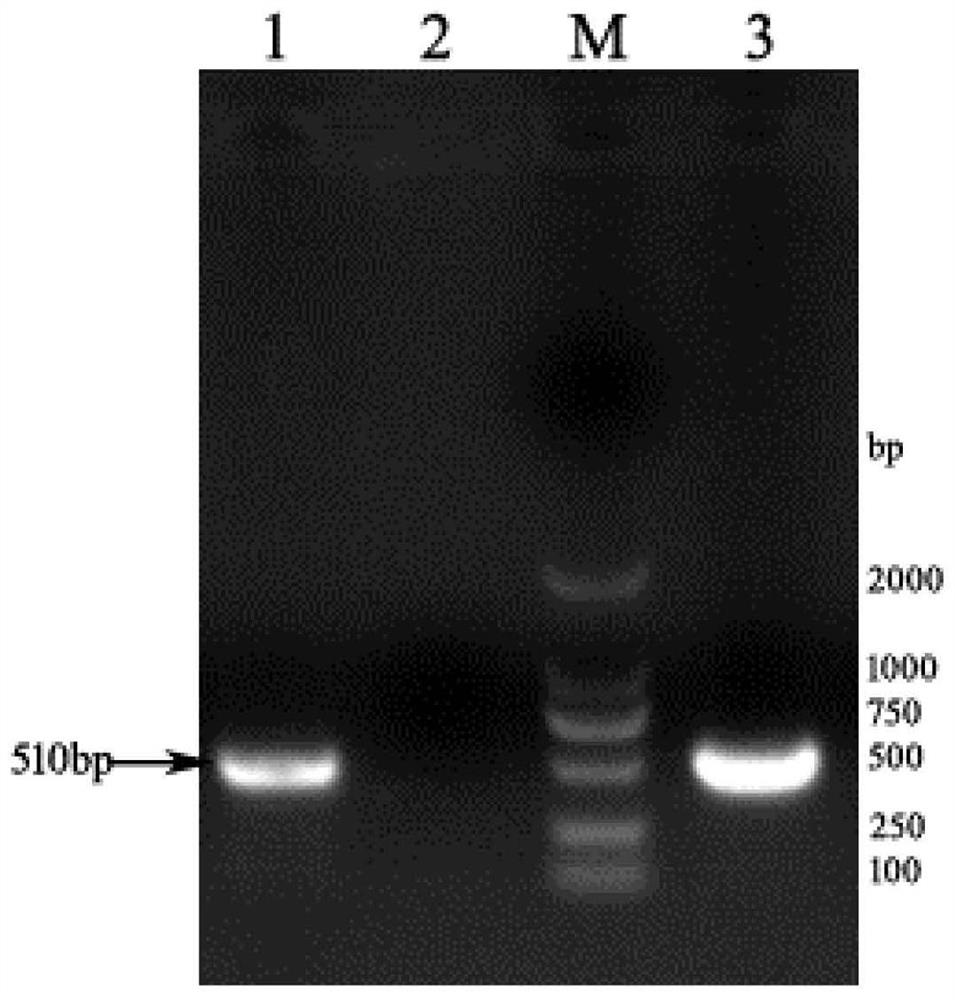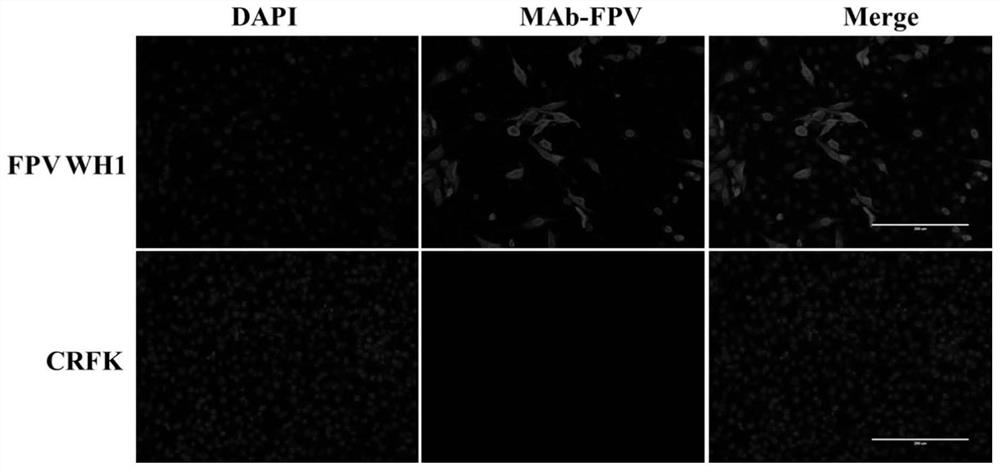A Strain of Feline Parvovirus and Its Application
A feline parvovirus and strain technology, applied in the direction of viruses, antiviral agents, viruses/bacteriophages, etc., can solve the problems of limited purchase channels, high prices, and no FPV vaccine approved for use, and achieve good safety and good protection force effect
- Summary
- Abstract
- Description
- Claims
- Application Information
AI Technical Summary
Problems solved by technology
Method used
Image
Examples
Embodiment 1
[0030] Example 1 Isolation and identification of FPV WH1
[0031] 1. Experimental method
[0032] 1. Virus isolation
[0033] (1) The patient materials diagnosed with feline parvovirus were collected from a pet hospital in Wuhan, China, most of which were feces. Dilute the feces with 10 times the volume of sterile 4.5g / L DMEM, mix well (operate on ice), 4°C, 9000rpm, 20min. The supernatant was collected by centrifugation, filtered through a 0.22 μm filter, and dispensed into sterile EP tubes as the virus to be separated, and stored at -80°C.
[0034] (2) Cultivate the susceptible cell CRFK to a cell density of 50%-60% in a T25 cell culture flask, inoculate the diseased material treated in the previous step into the susceptible cell CRFK at a ratio of 1:10, and place it at 37°C for culture Incubator, adsorbed for 2h, then changed to 2% DMEM maintenance solution, put it into 37 ℃, 5% CO 2 Culture in the incubator for 3-5 days and observe whether any lesions appear.
[0035]...
Embodiment 2
[0049] Example 2 Plaque purification of FPV WH1
[0050] 1. Experimental method
[0051] (1) After evenly digesting CRFK, adjust the cell concentration and inoculate a 6-well plate at an appropriate concentration. When the cell density is 50%-60%, prepare a virus solution and dilute it tenfold to obtain five concentrations of virus solution. 100 μL of virus solution was added dropwise to each well, adsorbed at 37°C for 2 hours, and the plate was shaken every 15 min to fully absorb the virus solution. After 2 hours, the virus solution was aspirated and washed twice with PBS.
[0052] (2) Prepare a 2% low-melting point agarose solution, melt at 72°C, and place it in a 37°C water bath to keep warm for later use. 2×DMEM is also preheated in a 37°C water bath.
[0053] (3) Mix the above 2% low agarose solution with 2×DMEM maintenance solution (2% serum, 1% double antibody) in a ratio of 1:1, add 2 mL / well to each well, and add 2 mL / well to a 6-well plate. Put it in the refrigerat...
Embodiment 3
[0057] Example 3 Determination of FPV WH1 Growth Kinetics
[0058] 1. Experimental method
[0059] (1) Inoculate the cells in a 24-well plate, and when the cell density reaches about 60%, infect the cells with 0.1MOI virus, and at the same time, replace it with 2% DEME maintenance solution (2% serum, 1% double antibody), and place it in 37 ℃ in an incubator.
[0060] (2) Collect cell supernatant samples at 12, 24, 36, 48, 60, 72, and 84 hours after inoculation, and use CRFK cells to detect viral TCID 50 .
[0061] (3) Subculture the cells in a 96-well plate, and when the cell density reaches about 50%, dilute the virus by 10 times with cell maintenance solution, add 100 μL of virus solution to each well, and repeat 8 times for each dilution. , placed in an incubator.
[0062] (4) Take out after 60 hours, use the indirect immunofluorescence method to measure the result of the virus titer, and use the Reed-Muench method to calculate the virus TCID 50 .
[0063] 2. Experime...
PUM
 Login to View More
Login to View More Abstract
Description
Claims
Application Information
 Login to View More
Login to View More - R&D
- Intellectual Property
- Life Sciences
- Materials
- Tech Scout
- Unparalleled Data Quality
- Higher Quality Content
- 60% Fewer Hallucinations
Browse by: Latest US Patents, China's latest patents, Technical Efficacy Thesaurus, Application Domain, Technology Topic, Popular Technical Reports.
© 2025 PatSnap. All rights reserved.Legal|Privacy policy|Modern Slavery Act Transparency Statement|Sitemap|About US| Contact US: help@patsnap.com



